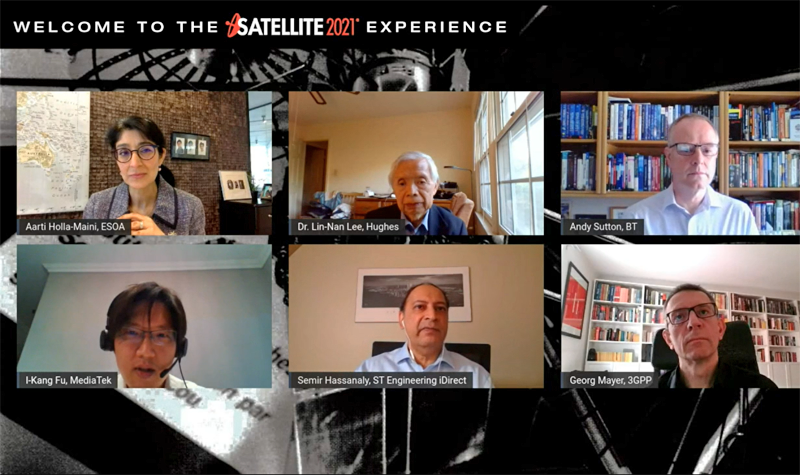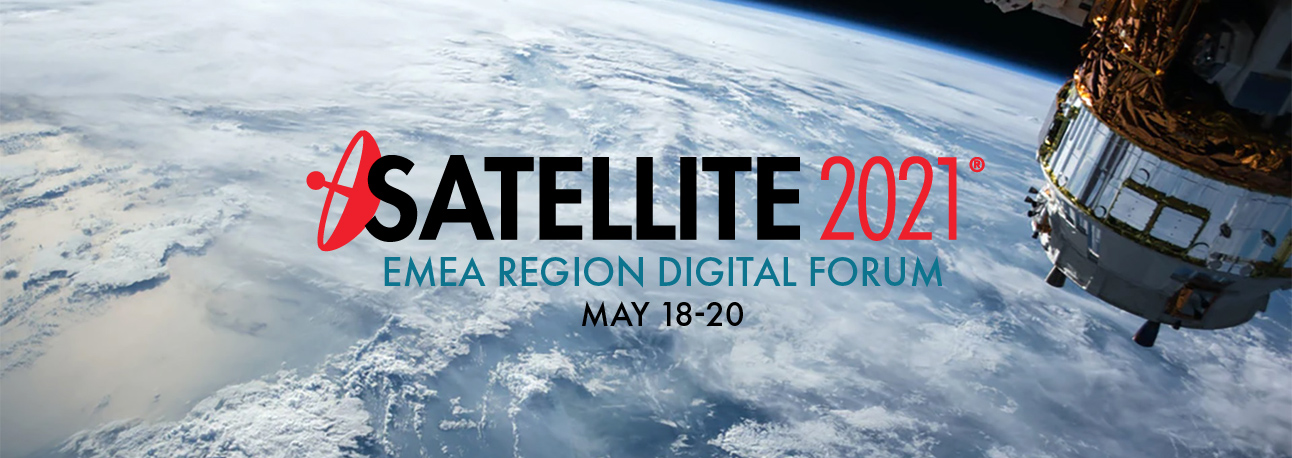What role does satellite technology have to play in the ‘network of networks’? Is 5G really set to become this all-encompassing standard or is it really just the next generation of mobile connectivity? Are satellite operators and service providers doing enough to ensure satellite’s inclusion in the next big thing and setting out their stall to be part of the ecosystem before 5G networks are deployed?
These questions and more were top of the list at the EMEA + Asia Digital Forum, part of Satellite 2021’s Satellite Experience. Moderator, Aarti Holla-Maina, Chair of ESOA, posed the questions to representatives from BT, Hughes, MediaTek, 3GPP and our own Semir Hassanaly, Head of Cellular Backhaul and Trunking. Here are 5 key insights.
The satellite industry has made a good impression on 3GPP

Mayer commented during the session: “Satellites [companies] are now committing to open standards and will be using 5G in the future. It will be big business and something to count on but this is also something that needs to fit more into the bigger 5G ecosystem, not only the vendors that provide the equipment but also the operators that have to look into scenarios where satellites are integrated and where applications can run perfectly between operators and satellite-run networks. You have had great success and a good strategy.”
He did, however stress that there are aspects that need to be worked upon, primarily, looking towards the newcomers into 3GPP. Verticals such as healthcare and the automotive industry are looking to the satellite industry to provide the global coverage that satellite offers and how they can best interact with the satellite infrastructure. It will be up to us, as an industry to work with them to help them find the answers.
Satellite really matters to MNOs
Andy Sutton, Principal Network Architect at BT, owner of UK MNO EE, explained that they use satellite extensively and that it had been a strong learning curve working with the satellite industry over the last few years. The company had to extend geographical coverage and to reinforce failure points that had been identified across the network. At present, the company deploys in the region over 1000 VSAT terminals across a range of use cases from extreme mobile backhaul to rapid response vehicles that are used to deploy temporary base stations. He explained that satellite gives BT “a really flexible tool in the toolkit and stretches across a wide range of use cases today.”
The Network of Networks will include satellite
From BT’s perspective, this was a ‘yes’ but there is a lot of work to be done. This work must be carried out on various levels – at a 3GPP level, at an industry level as well and also between the operators and the satellite providers themselves. There must be agreement on the optimal techno-economic integration. A collective effort will be needed to ensure that the extensive work that goes into making this happen is truly utilized so that satellites really do optimize 5G networks. Ultimately, discovery of the optimal way to integrate technologies so that they are not seen as competing but collaborative is the most important thing. Find a mutually beneficial solution for everybody will ensure that 5G truly does become a network of networks.
Standardization work is essential
Open standards will be the means by which more synergies can be realized between different sectors across the entire ecosystem, so satellite can enjoy bigger market space. Standardization work is critical. The industry can also be encouraged by the use of open source software and high performance, generic hardware which will help to drive down network costs.
Semir Hassanaly noted that standards are also critical to IP content multimedia production systems. IP content distribution is a key use case identified for 5G, especially for a company like ST Engineering iDirect, that is very active in the Media & Broadcast market. Standardization work is also integral to critical communications in terms of defining the application layers for public safety where satellite has a very important role to play in markets such as rail and connected cars. It’s also critical in terms of establishing common APIs for edge applications.
We’re already looking towards 6G
Aarti Holla-Maini noted that various whitepapers on 6G and broadband access assume the role of satellite in these future networks – not just from the LEO perspective but from MEO, GEO and even HEO.
The panelists agreed that though 6G is in its nascent days, there are already conversations on how the satellite industry justifies the move from 5G to 6G. 6G will offer opportunity for both LEO and GEO satellite constellations and there will be no architectural changes as 5G will have created a steppingstone to 6G. 5G is building upon the architecture begun by 4G, evolving significantly towards a service-based offering. This, in turn, prepares the foundations for 6G and the fulfilment of more sophisticated applications.
That said, the concept of 6G is very vague and we don’t know what this will look like yet. The focus will need to be on maximizing coverage, optimizing networks and focusing on the QoS for outdoor and indoor coverage and how that is split between terrestrial and satellite. It’s expected that there will also be increased automation and use of AI to enhance these networks. The industry continues to look forward and, through continued participation in 3GPP and concerted work on standards, a place for satellite on 6G should be assured.
Visit our 5G page to read our whitepaper and watch tutorials on 5G satellite technology.
